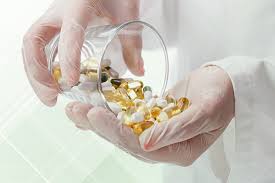
- +86-13363869198
- weimiaohb@126.com

Aug . 20, 2024 02:14 Back to list
Lidocaine Hydrochloride CAS 73-78-9 Overview and Applications in Medicine
Lidocaine Hydrochloride A Comprehensive Overview
Lidocaine hydrochloride, known by its chemical designation as CAS 73-78-9, is a widely used local anesthetic and antiarrhythmic agent. It is a member of the amide group of anesthetics, which are known for their effectiveness and safety profiles. Lidocaine is particularly valued in the medical field for its rapid onset of action and versatility in various clinical applications.
Chemical Structure and Properties
Lidocaine hydrochloride is a colorless to pale yellow crystalline powder that is soluble in water. Its chemical formula is C14H22N2O·HCl, and its molecular weight is 288.81 g/mol. The drug functions by blocking sodium channels, which prevents the initiation and conduction of nerve impulses. This mechanism of action is fundamental to its use as a local anesthetic.
Uses in Medicine
Lidocaine hydrochloride is primarily employed in a multitude of medical settings. As a local anesthetic, it is commonly used during surgical procedures to ensure patient comfort. It is often administered via injection, but it can also be found in topical forms, such as gels and creams, for localized pain relief.
In addition to its anesthetic properties, lidocaine is frequently used in cardiology. Its effectiveness in treating arrhythmias—particularly ventricular arrhythmias—has made it a staple in advanced cardiac life support protocols. By stabilizing the cardiac membrane, lidocaine can restore normal heart rhythms and reduce the risk of further complications.
china lidocaine hydrochloride cas 73-78-9

Application in Dentistry
Lidocaine hydrochloride has also carved a niche in the field of dentistry. Dentists often use this anesthetic to numb the area surrounding a tooth prior to procedures such as extractions, root canals, and cavity fillings. The ability to provide pain relief while allowing patients to remain awake during treatment has revolutionized dental practices, making procedures more tolerable and less anxiety-inducing.
Side Effects and Precautions
While lidocaine is generally regarded as safe, it is not without side effects. Common side effects may include dizziness, drowsiness, and localized reactions such as swelling or itching at the injection site. In rare cases, more serious side effects like cardiovascular or central nervous system issues may occur, particularly if the drug is administered inappropriately or in excessive dosages.
Healthcare providers are trained to monitor patients closely for adverse reactions, especially in specific populations, such as the elderly, who may be more sensitive to the drug's effects. Therefore, it is vital for clinicians to use lidocaine in accordance with established guidelines and dosing protocols.
Conclusion
Lidocaine hydrochloride (CAS 73-78-9) is an invaluable compound in modern medicine, recognized for its effectiveness as a local anesthetic and its utility in treating arrhythmias. Its multifaceted applications span various fields, including surgery, cardiology, and dentistry. As with any medication, adherence to proper usage guidelines is critical to minimize risks and ensure patient safety. Overall, lidocaine remains a cornerstone in the pharmacological arsenal, enhancing patient care and comfort across a spectrum of medical practices.
-
Top CAS: 79099-07-3 Factories & Wholesale Supplier from China
NewsJul.30,2025
-
High-Quality GS-441524 for White Liquid Type Factories & Suppliers
NewsJul.29,2025
-
High-Quality Pharmaceutical Intermediates for Sale – Reliable Supply
NewsJul.29,2025
-
High-Quality Pharmaceutical Intermediates for Sale - Reliable Solutions
NewsJul.29,2025
-
High-Quality Pharmaceutical Intermediates Supplier for Global Market
NewsJul.28,2025
-
GS-441524 for White Liquid Type Factories – High Purity & Reliable Supply
NewsJul.28,2025